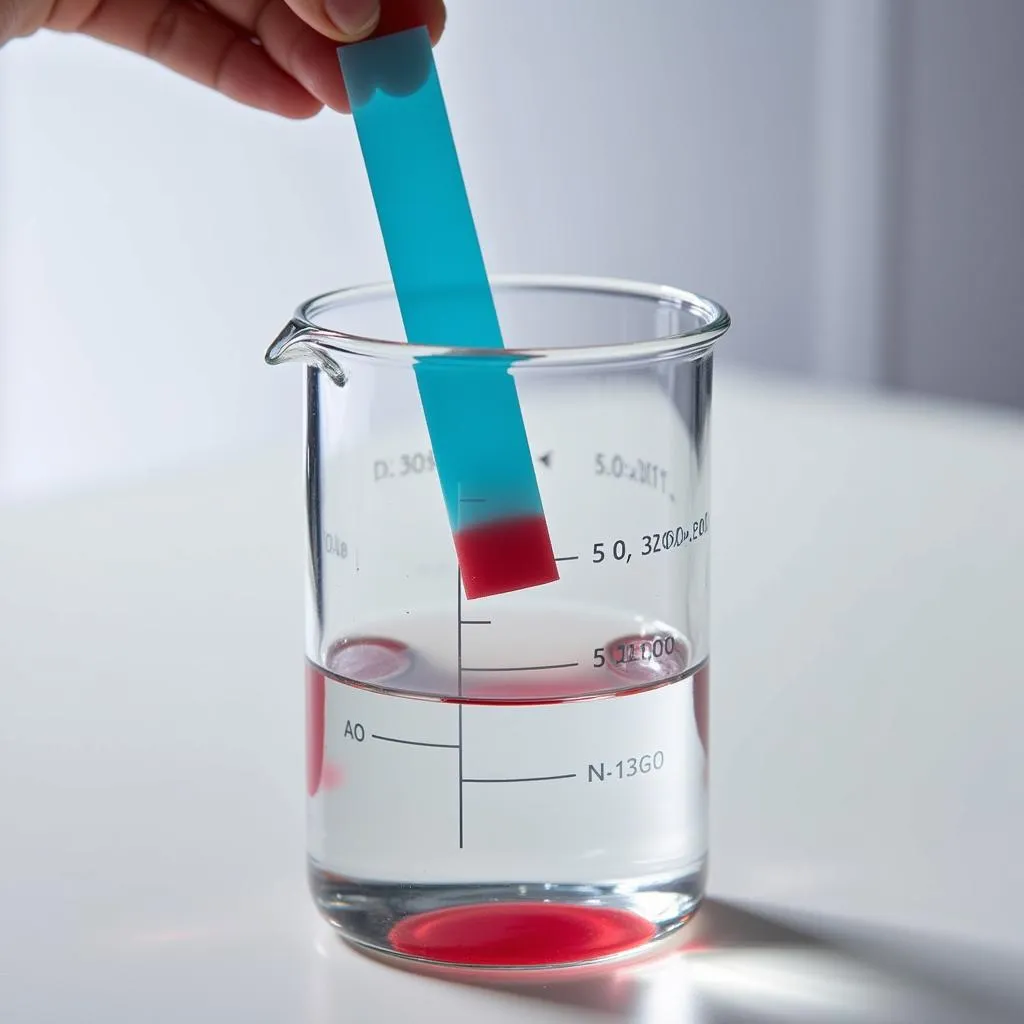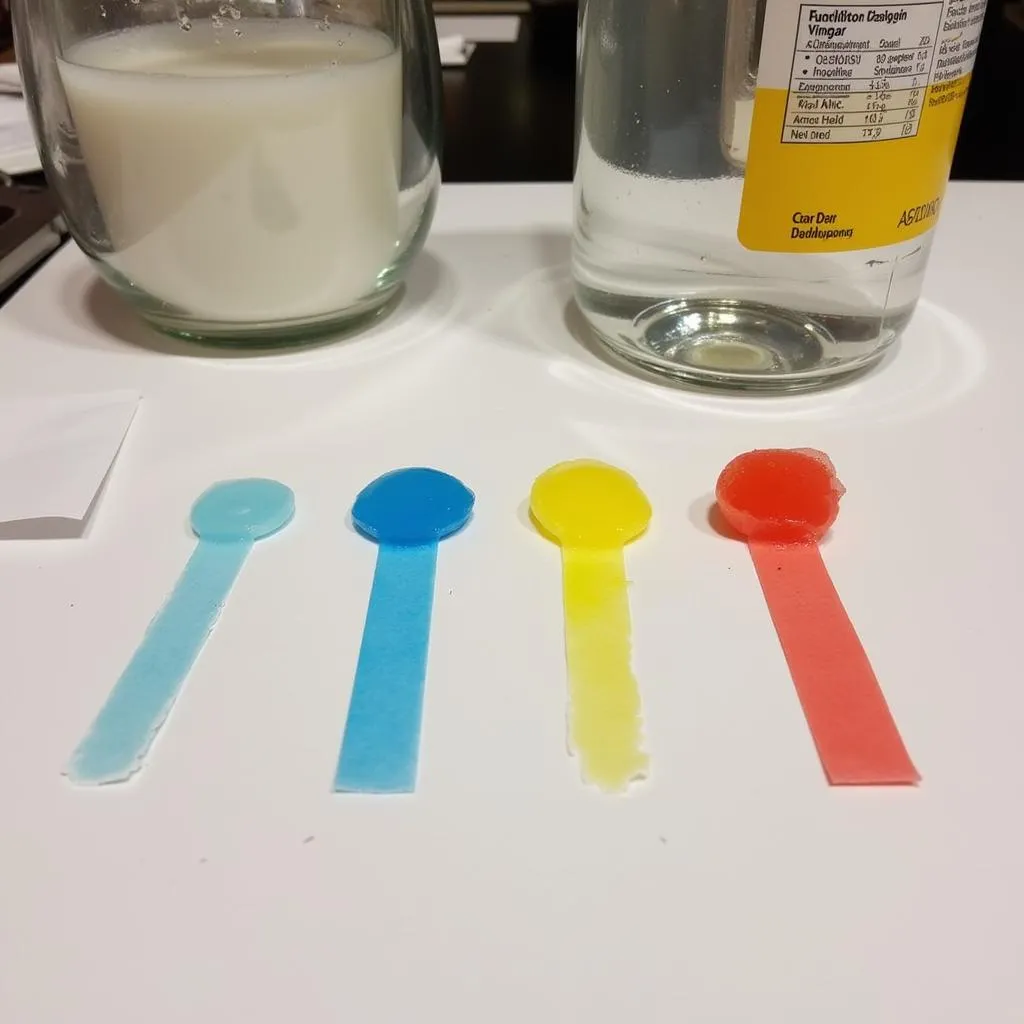Litmus paper is a pH indicator that changes color in the presence of an acid or base. It is commonly used in science labs to test the acidity or alkalinity of a solution. But what color do acids turn litmus paper?
Acids turn blue litmus paper red. This simple color change is a quick and easy way to identify acidic substances.
Understanding Litmus Paper and pH
Litmus paper is made from natural dyes extracted from lichens. These dyes are sensitive to changes in pH, which is a measure of how acidic or basic a solution is. The pH scale ranges from 0 to 14:
- 0-6: Acidic
- 7: Neutral
- 8-14: Basic (alkaline)
When blue litmus paper comes into contact with an acidic solution (pH less than 7), it turns red.
 Blue litmus paper turning red in a beaker containing an acidic solution
Blue litmus paper turning red in a beaker containing an acidic solution
Common Acids and Their Effects on Litmus Paper
Many substances we encounter in our daily lives are acidic. Here are a few examples:
- Lemon juice: Citric acid in lemon juice will turn blue litmus paper red.
- Vinegar: Acetic acid in vinegar also turns blue litmus paper red.
- Battery acid: The strong sulfuric acid in batteries will cause a rapid and intense color change in blue litmus paper, turning it bright red.
 Common household acids and their effect on blue litmus paper
Common household acids and their effect on blue litmus paper
What About Bases?
While acids turn blue litmus paper red, bases have the opposite effect. Bases turn red litmus paper blue. Some common bases include baking soda, soap, and bleach.
The Importance of Litmus Paper
Litmus paper provides a simple yet effective way to determine the acidity or alkalinity of a solution. This is important in various fields:
- Chemistry: Identifying acids and bases is crucial for chemical reactions and experiments.
- Environmental Science: Monitoring the pH of water and soil is essential for environmental health.
- Medicine: The pH of bodily fluids can provide insights into health conditions.
“Understanding the properties of acids and bases is fundamental in chemistry,” says Dr. Emily Carter, a chemistry professor. “Litmus paper provides a quick and visual way to make these distinctions, which is invaluable in both research and education.”
Conclusion
The next time you see a strip of blue litmus paper turning red, you’ll know that you’ve encountered an acid! This simple color change serves as a powerful indicator in numerous applications, highlighting the importance of understanding pH levels in our world.
FAQs
1. What happens if litmus paper doesn’t change color?
If litmus paper doesn’t change color, the solution being tested is likely neutral (pH 7). Water is a common example of a neutral substance.
2. Can litmus paper be reused?
No, litmus paper is designed for single use. Once it has changed color, it cannot be used again to test a different solution.
3. Are there alternatives to litmus paper?
Yes, other pH indicators like pH meters and universal indicators can provide more precise pH measurements compared to litmus paper.
Need Help with Color Selection for Your Next Project?
Choosing the right colors for your home or business can be daunting. Contact Color Box Hà Nội today! Our team of color experts can help you create a space that reflects your unique style and personality. Call us at 0373298888, email us at [email protected] or visit our showroom at 86 Cầu Giấy, Hà Nội.
For more information on how colors impact our perception and mood, check out our blog post on does colorado use salt on roads. If you are interested in learning more about the distance between states, you might find this article useful: how far is utah from colorado. Our team is available 24/7 to answer any questions you may have.

